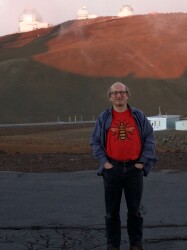BibTex format
@article{Duivenvoorden:2018:mnras/sty691,
author = {Duivenvoorden, S and Oliver, S and Scudder, JM and Greenslade, J and Riechers, DA and Wilkins, SM and Buat, V and Chapman, SC and Clements, DL and Cooray, A and Coppin, KEK and Dannerbauer, H and De, Zotti G and Dunlop, JS and Eales, SA and Efstathiou, A and Farrah, D and Geach, JE and Holland, WS and Hurley, PD and Ivison, RJ and Marchetti, L and Petitpas, G and Sargent, MT and Scott, D and Symeonidis, M and Vaccari, M and Vieira, JD and Wang, L and Wardlow, J and Zemcov, M},
doi = {mnras/sty691},
journal = {Monthly Notices of the Royal Astronomical Society},
pages = {1099--1119},
title = {Red, redder, reddest: SCUBA-2 imaging of colour-selected Herschel sources},
url = {http://dx.doi.org/10.1093/mnras/sty691},
volume = {477},
year = {2018}
}

